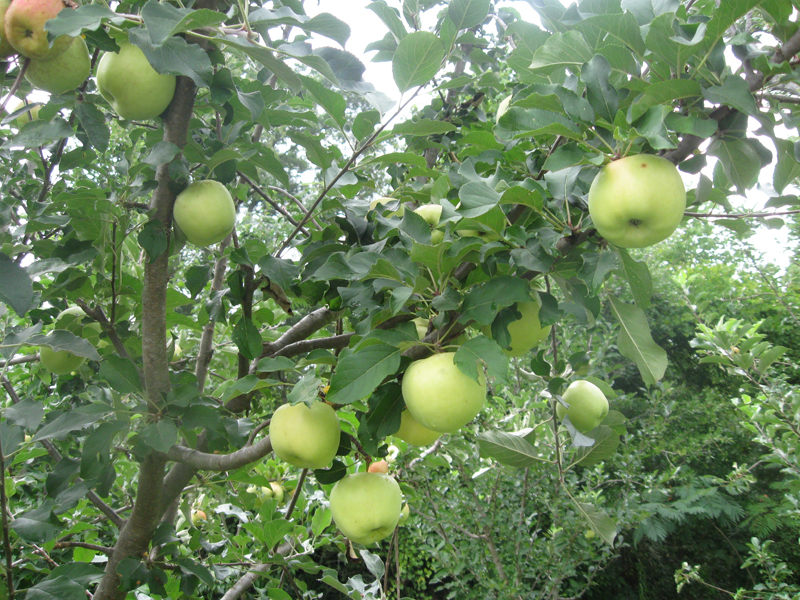[printfriendly]
Fall Is the Best Time to Start Your Fruit Orchard

One of the questions frequently asked at the nursery is, “What is the best time to plant my fruit trees?†Beyond the obvious answers of “the sooner the betterâ€, or “three years ago so you could be harvesting fruit nowâ€, there are some good guidelines of when to plant and what are the best kinds of plants to buy.
Fruit trees are available in two forms, container grown and bare root. Up until 30-years ago most fruit trees were only obtainable as bare root trees. These trees are grown in open fields and dug during the winter dormant season. The planting window of a bare root tree is very short and to be successful you really need to have them in the ground in the mid-December to mid-February window in the North Florida area. Bare root trees are easily lost if they are not properly handled. Having no dirt on the root means they need to be kept packed in moist material until they are planted. Avoid buying trees with dry looking bark and make sure the plant comes to you packed in a moist medium. Bare root plants also can be more difficult to transplant as the majority of the roots have been removed during digging; be sure to trim some of the top off the tree to compensate for this loss. The majority of fruit trees sold to home owners today are container grown; these trees can be planted year round. They offer the home orchardist a more stable plant with a complete root system that has not been traumatized. There is a danger of buying a tree that has been held too long in its container. Avoid buying trees that have mossy bark or large roots that are visible on the surface of the root ball. When planting, be sure to trim any swirling large roots on the outside of the root ball to insure plants longevity in the ground.
Although container trees can be planted year round the best time to plant time is in the fall. The cooling weather of fall promotes root growth which will continue through the winter months. A fall set fruit tree goes into our stressful dry spring with a vast amount more roots than a winter set plant.
There are better times than fall to plant certain types of fruit trees. Fruit trees that are subject to being in lost in freezes like banana, pomegranate and citrus can be planted in fall and will be a more stable plant in the spring but they must be protected during hard freezes to insure the plant is not lost. If you are a busy person and covering plants is difficult then wait and plant this group in the spring.
Fall is also the best time to obtain the largest selection of fruit trees, many of the most popular varieties and rarer fruits are sold to early buyers, so it pays to be an early bird when shopping for fruit trees.
Ground preparation is also important. A fruit orchard is a long term project. It pays to know what type of soil you have. Having a soil test run on your yard is an inexpensive investment in the success of your orchard. It will tell you what your soil pH is and recommend soil amendments to make the fruit trees you’ve chosen happy. Soil kits for testing your soil can be obtained at your local county extension office and they usually only take a few weeks to get the results back.
Growing your own fruit is a fun relaxing hobby that can reward you with healthy food. There is no way to eat more locally than eating fruit out of your own yard.

